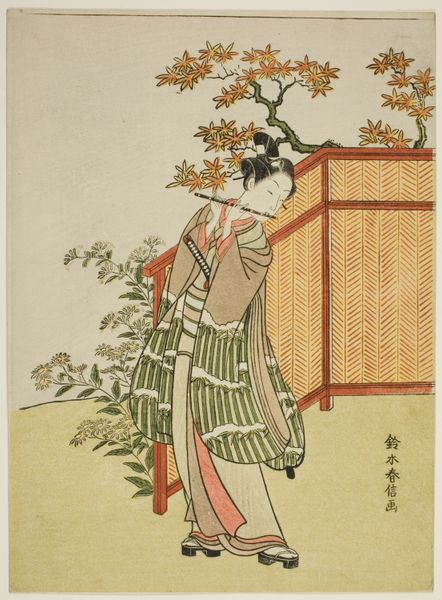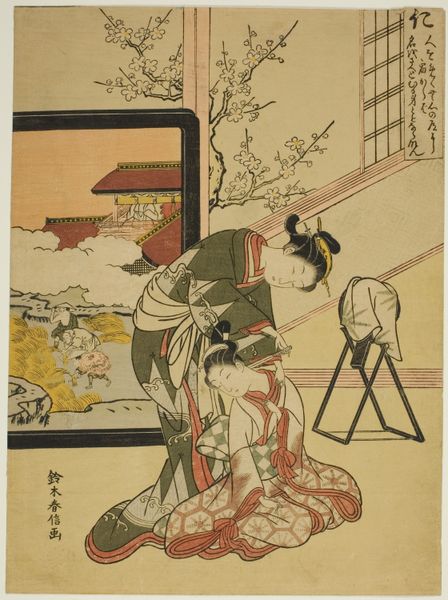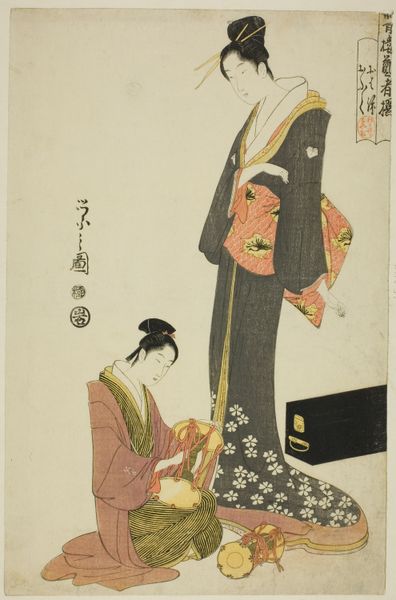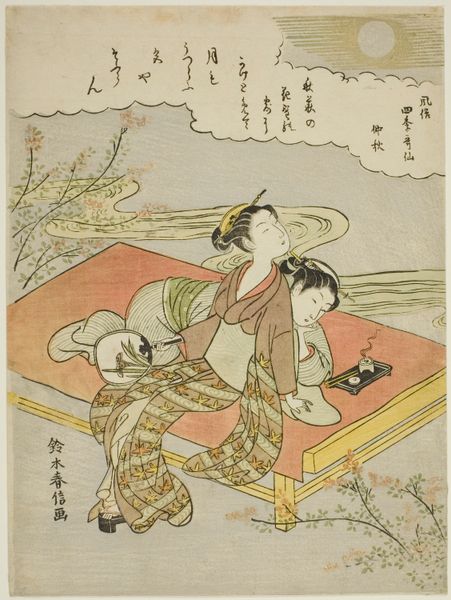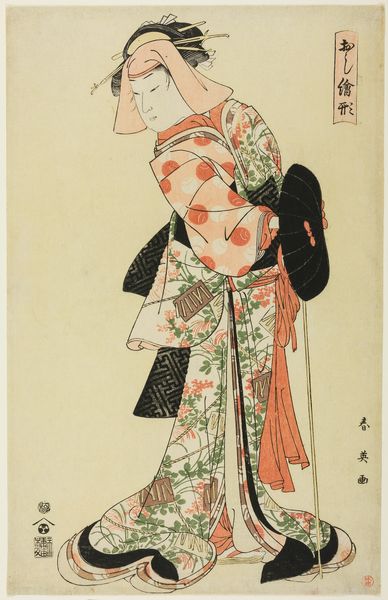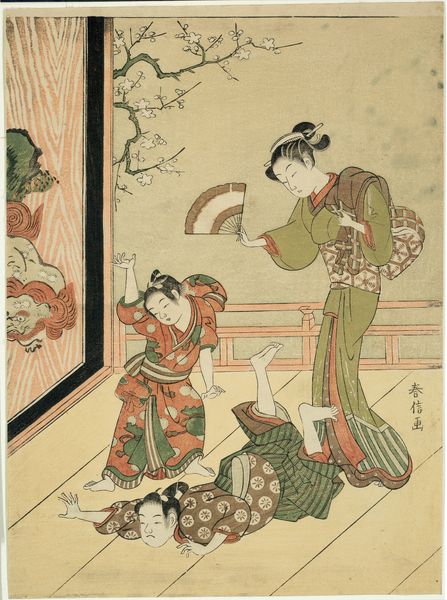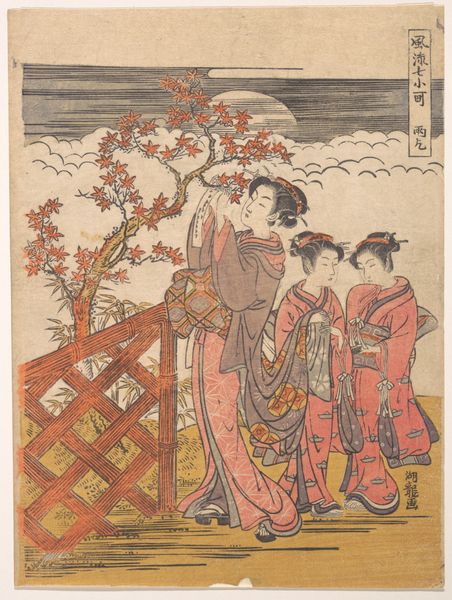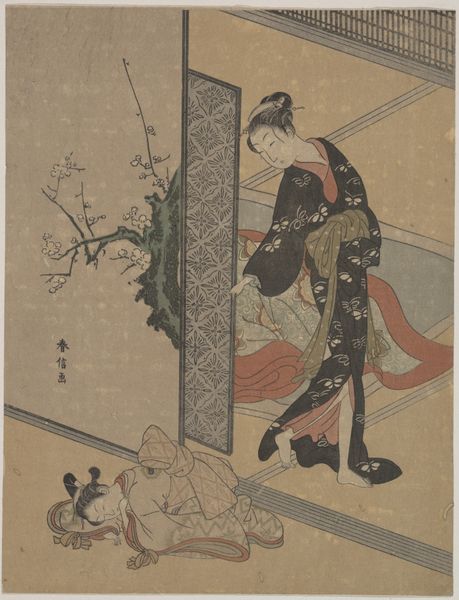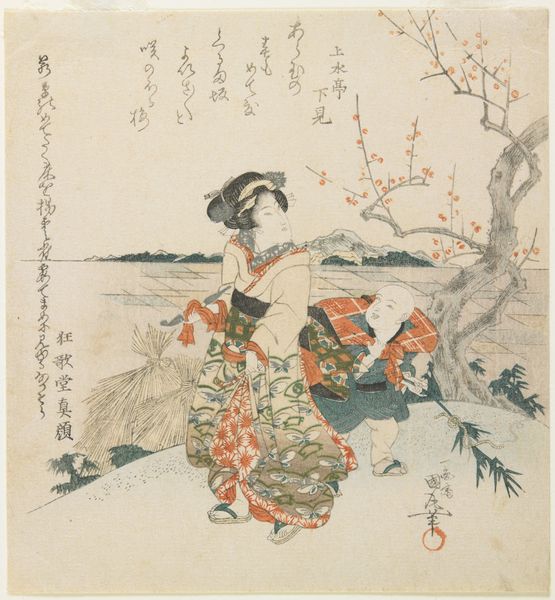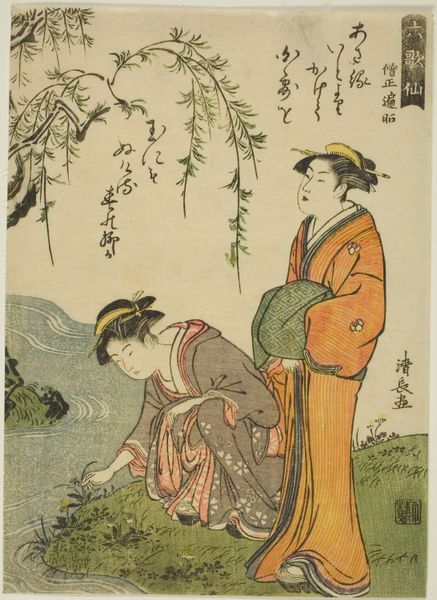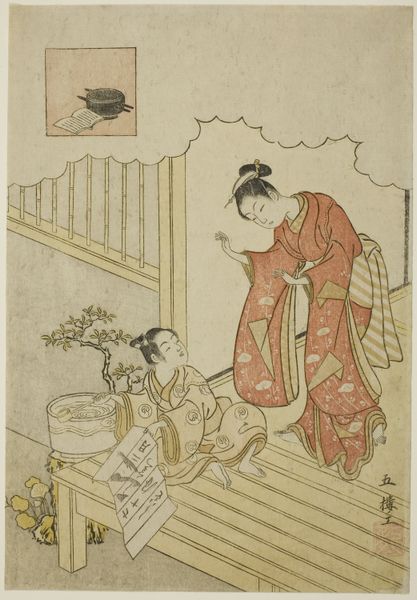
print, woodblock-print
#
ink painting
# print
#
asian-art
#
ukiyo-e
#
figuration
#
woodblock-print
#
orientalism
#
genre-painting
Dimensions: 28.5 × 21.3 cm (11 1/4 × 8 1/2 in.)
Copyright: Public Domain
Curator: Suzuki Harunobu’s "Picking Persimmons," a woodblock print from around 1767 or 1768, depicts two women gathering fruit near a fence. My initial sense is one of delicate anticipation, of fleeting moments preserved in simple, elegant lines. Editor: Yes, it has this incredibly serene quality to it. I'm struck by the materiality; you can almost feel the smoothness of the paper, the controlled textures of the woodblock. What was involved in creating works like this at the time? Curator: These ukiyo-e prints involved a complex division of labor. Harunobu, as the artist, would design the image, but skilled block cutters would then translate his design onto woodblocks. Finally, printers would apply ink and meticulously press the blocks onto paper. Editor: That division speaks to a larger system of production and consumption in Edo-period Japan. These weren't precious, unique objects for the elite. They were commodities made accessible to a wider urban population. Curator: Exactly. And thinking about consumption, genre scenes like this became hugely popular. They offered glimpses into daily life, celebrating the beauty of the ordinary. There is this feeling that he is capturing and producing for an interested society a perspective on femininity in Japan. Editor: Beyond the technique and accessibility, it's interesting to consider the social narratives they embody. How does this seemingly innocuous image participate in larger discourses around gender, leisure, and class? Curator: The figures, with their stylized features and elegant clothing, suggest a certain social class, perhaps not the highest, but certainly not laborers in the traditional sense. Editor: Perhaps a romanticized view of this class. Also the image underscores that beauty could be perceived within the frame of daily labor, though harvesting persimmons is hardly strenuous, of course. It serves up ideas about leisure and labor alongside the portrayal of gender. Curator: Yes, that tension between the ideal and the real, it complicates our reading. These persimmons might be food, might be sweet snacks for them, might be representative of other symbols from that time period. Editor: Overall, this piece does invite us to consider not only the artistic vision and collaborative processes, but also how the work's function, value, and representation would shift through different hands across both centuries and social environments. Curator: And as viewers today, we’re inevitably drawn to the beautiful aesthetic.
Comments
No comments
Be the first to comment and join the conversation on the ultimate creative platform.
